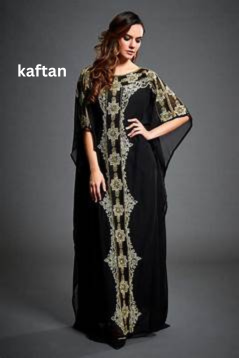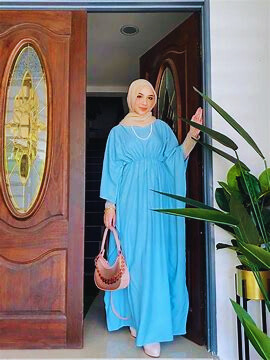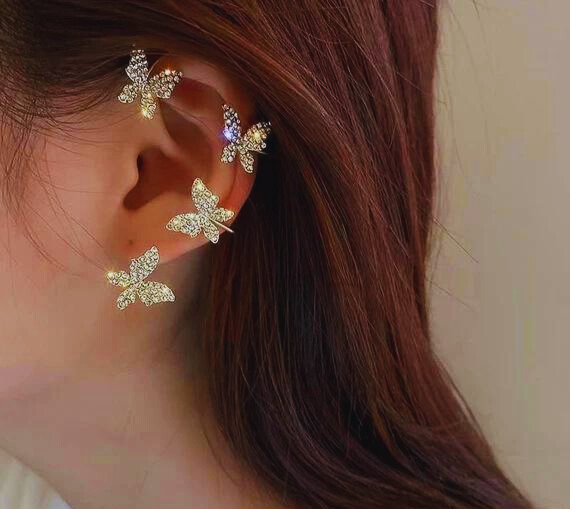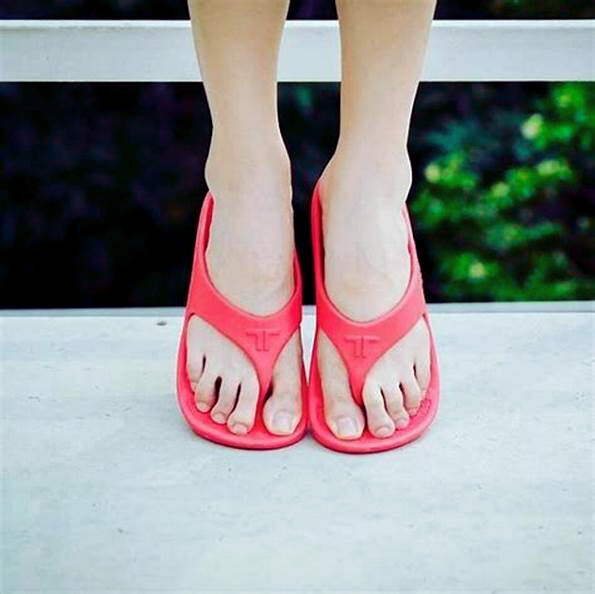A kaftan is a long, flowing, free garment that frequently has long, broad arms. This garment has an illustrious past dating back to the eras of ancient Mesopotamia, Egypt, Persia, and the Ottoman Empire. Around the 12th century, the kaftan, also called the caftan, was exclusive to royal wearers as a prestige and power symbol. These clothes had reached the middle classes by the 17th century, and they were also gaining popularity in North African and Middle Eastern nations. Although kaftans have long been a mainstay in the Arabic world, in the 19th century they also became fashionable in the West.
Silk can be spun to create kaftans, or they can be constructed of bamboo, linen, cotton, or any material sort of fluid cloth. They might be plain pieces that are perfect for beachwear or casual day wear, or they can be elaborate and a great option for an evening party. There are kaftans that are simply colored cuts, those with printed fabrics, and those with intricate embellishments. A kaftan collection is a must-have for everyone looking for a wardrobe essential with a thousand uses. Here’s all you need to know about wearing this simple, wardrobe staple, which has a rich cultural history, an infinite number of designs, and lovely, breezy adaptability.
Kaftan Styles: Informal to Formal
Traditional Kaftans:

Traditionally fashioned kaftans are frequently based on the traditional attire of particular nations and civilizations. People may wear traditional kaftans in a variety of locations, including North Africa, West Africa, Turkey, Morocco, the Middle East, and Southwest Asia. The styles used in these locations will differ from one another.
Wanderlust Kaftans:
Bohemian-style kaftans, which were fashionable in the 1960s and 1970s as part of the counter-culture movement, are often made of flowing material and available in a variety of vivid and eye-catching designs. These kaftans entered Western culture, sometimes coming from people who returned to the West after traveling abroad on a soul-searching trip. Elizabeth Taylor was a frequent wearer of kaftans and even donned one for her marriage to Richard Burton.
Kaftans Resort:
Resort kaftans might be the ideal getaway option. Easy, breezy, and lightweight, a vacation kaftan may be tossed over a bikini with ease in addition to providing sun protection. These cotton kaftans with a beachy vibe are frequently vivid and lovely, utilizing light materials and traditional beachwear designs to their fullest.
Official Kaftans:
Formal kaftans are appropriate for formal events and frequently have some similarities to evening gowns. These kaftans are all about accepting luxury and adding a dash of glitz to the ensemble, from sumptuous textiles to ornamental designs and fitted silhouettes. Formal kaftans are frequently constructed from brocade cloth, silks, and other exquisite materials. They can feature opulent trimmings that marriage to Richard Burton.
Kaftans Resort:
Resort kaftans might be the ideal getaway option. Easy, breezy, and lightweight, a vacation kaftan may be tossed over a bikini with ease in addition to providing sun protection. These cotton kaftans with a beachy vibe are frequently vivid and lovely, utilizing light materials and traditional beachwear designs to their fullest.
Official Kaftans:
Formal kaftans are appropriate for formal events and frequently have some similarities to evening gowns. These kaftans are all about accepting luxury and adding a dash of glitz to the ensemble, from sumptuous textiles to ornamental designs and fitted silhouettes. Formal kaftans are frequently constructed from brocade cloth, silks, and other exquisite materials.
Tips for Maintaining Your Kaftan:
You should always check the label or the care instructions that come with your garment because how to take care of your kaftan will depend on the material. Since the majority of kaftans are composed of natural materials like cotton, silk, linen, or bamboo, you might wish to handwash them or limit your washing cycle to a soft one for peace of mind. Instead of using harsh chemicals, use a gentle detergent. Your kaftan may expand and alter in shape if you hang it to dry after washing; instead, lay it flat to let it air dry naturally. Additionally, keep it out of the direct sun.
Conclusion:
The Importance of Kaftans for Your Wardrobe Kaftans look fantastic with anything in your closet. This old garment has endured over time for a variety of reasons. The kaftan is always flattering, comfy, and comes in a variety of designs. It can be worn to a sophisticated soirée or against a backdrop of sun and sand.
FAQs
Why would someone wear a kaftan?
A kaftan is a common garment to wear in hot and muggy weather or in societies where modesty is valued. It can be styled for fashion as well. Depending on the style, kaftans can be worn to both more formal and more casual events because they are such a versatile fashion option.
Who has to dress in kaftans?
Anyone can put on kaftans. For all genders, they are a popular choice in clothing. Kaftans fit various body shapes, sizes, and types since they are comfy and adaptable. For a cozy cover-up, people opt to wear kaftans on the beach or in warm areas.
Are kaftans worn by Muslims?
For many years, the kaftan has been a traditional garment for many Islamic cultures. In the Middle East and other regions where modest clothing may be promoted, both men and women frequently wear them.
Do you dress to go under your kaftan?
You can wear clothing underneath a kaftan, depending on the time of year, the material, and the particular kaftan. This might be required if your kaftan is made of a thin, light material that is somewhat see-through.
for more information visit our Homepage


